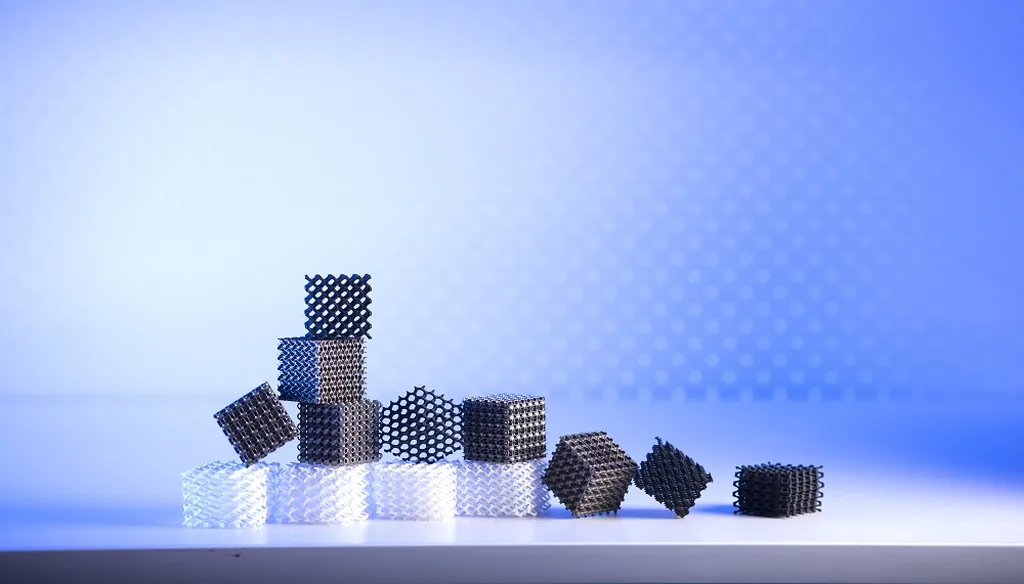In the ever-evolving landscape of advanced materials and additive manufacturing, a groundbreaking study led by Omar Waqas Saadi from the Department of Mechanical and Nuclear Engineering at Khalifa University of Science and Technology in Abu Dhabi has unveiled promising advancements in the realm of functionally graded nanocomposite lattices. Published in the open-access journal ‘Composites Part C: Open Access’ (translated to English as ‘Composites Part C: Open Access’), this research delves into the mechanical and piezoresistive properties of geometrically graded octet and kelvin lattices, fabricated using Digital Light Processing (DLP) 3D printing techniques.
The study focuses on lattice structures with varying unit cell sizes but constant relative density, composed of an electrically conductive nanocomposite photoresin infused with multi-walled carbon nanotubes (MWCNTs). The findings are particularly intriguing for the energy sector, where materials with enhanced energy absorption and strain/damage sensing capabilities are in high demand.
Under monotonic compression, the graded octet lattice structures demonstrated significant improvements. “The peak stress and energy absorption of the graded octet lattice rose with increasing level of gradation,” explains Saadi. “We observed enhancements in these properties by factors of up to 2.6 and 2.0, respectively, compared to their non-graded counterparts of equal weight.” This suggests that the adoption of functional geometry gradients in nanocomposite lattices can lead to materials that are not only stronger but also more efficient in absorbing energy, a critical factor in applications ranging from protective structures to energy-absorbing systems in the energy sector.
In contrast, the graded kelvin lattice structures showed lower enhancements in energy absorption, up to 1.2 times the non-graded equivalent. However, the piezoresistive response of both octet and kelvin lattices was characterized by a sharp initial drop in electrical resistance followed by a nonlinear response, indicating distinct failure processes. “The initial gauge factor of the lattice structures increased with increasing level of gradation and relative density,” notes Saadi. “This means that the structures become more sensitive to strain and damage, which is crucial for real-time monitoring and predictive maintenance in industrial applications.”
The geometric gradients also enhanced the structure’s recoverability, allowing the struts in the softer layers to fold and unfold during cyclic compressive loading. This feature yields enhanced cyclic stability in piezoresistive behavior, making these materials highly suitable for applications where repeated loading and unloading cycles are common.
The implications of this research are far-reaching. In the energy sector, for instance, materials that can absorb energy more efficiently and provide real-time feedback on their structural integrity can lead to safer and more reliable operations. Imagine wind turbines with lattice structures that can detect and report damage before it becomes critical, or offshore platforms that can withstand and absorb the impact of harsh environmental conditions more effectively.
As the world continues to push the boundaries of material science and additive manufacturing, studies like this one pave the way for innovative solutions that can address some of the most pressing challenges in various industries. The work of Omar Waqas Saadi and his team not only advances our understanding of functionally graded nanocomposite lattices but also opens up new avenues for their practical applications, ultimately contributing to a more resilient and efficient energy infrastructure.
In the words of Saadi, “This research is just the beginning. The potential for these materials to revolutionize various industries is immense, and we are excited to explore further advancements in this field.” As we look to the future, the integration of such advanced materials into commercial applications could very well redefine the standards of safety, efficiency, and sustainability in the energy sector and beyond.

